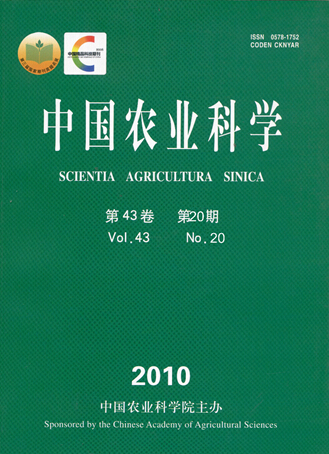【Objective】 This paper was aimed to discuss the mutagenic effects of the 60Co-γ irradiation treatment on tissue culture seedlings of ornamental crabapple. 【Method】 Seven 60Co-γ doses were selected to irradiate the tissue culture seedlings of crabapple ‘Indian Magic’ (Malus crabapple ‘Indian Magic’), and then the rooting rate, propagation ratio, death ratio of the tissue culture plants, and the variation of the growth status, leaf morphology and ultrastructure of transplanted seedlings were investigated. 【Result】 With the increment of the 60Co-γ irradiation dose, the rooting rate, average root length, seeding height, proliferation rate of the cultured plants in rooting and subculture medium were decreased significantly, in which there were significant differences in index between the treatments of <30 Gy and >30 Gy irradiation dose. As the irradiation dose were amplified, the death rate of the cultured plants rose significantly after irradiation, as a result of that, the median lethal dose(LD50) was defined as 45.5 Gy (r=0.936) by regression analysis. Under the condition of <LD50 irradiation treatments, the morphology of tissue culture plants appeared typical dwarfing characteristics, in which the leaves became smaller and thicker, the internodes of the shoot and root length became shorter and coarser, the apical growth vigor of the transplanted seedlings decreased, and the leaf color, margin, shape varied significantly compared with seedlings in control (CK). Through observation of the leaf ultrastructure, it was found that, with the increment of the irradiation dose, the length, width, perimeter and area of stoma apparatus in the leaves of transplanted seedlings increased, but the ratio of length/width, length, perimeter, width and area of the stoma decreased, and also the thickness of leaves, palisade tissue, spongy tissue as well as its ratio decreased (except 30 Gy). So it was inferred that the variation of the structure and apparent characteristics of leaves are adapted each other in tissue culture seedlings of ornamental crabapple with 60Co-γ irradiation treatments. 【Conclusion】 After radiation treatment at the dose of 30 Gy, the tissue culture seedlings can keep normal growth, and the variation properties appeare obviously, the mutagenic effects are stable. Thirty Gy is an appropriate irradiation dose.









